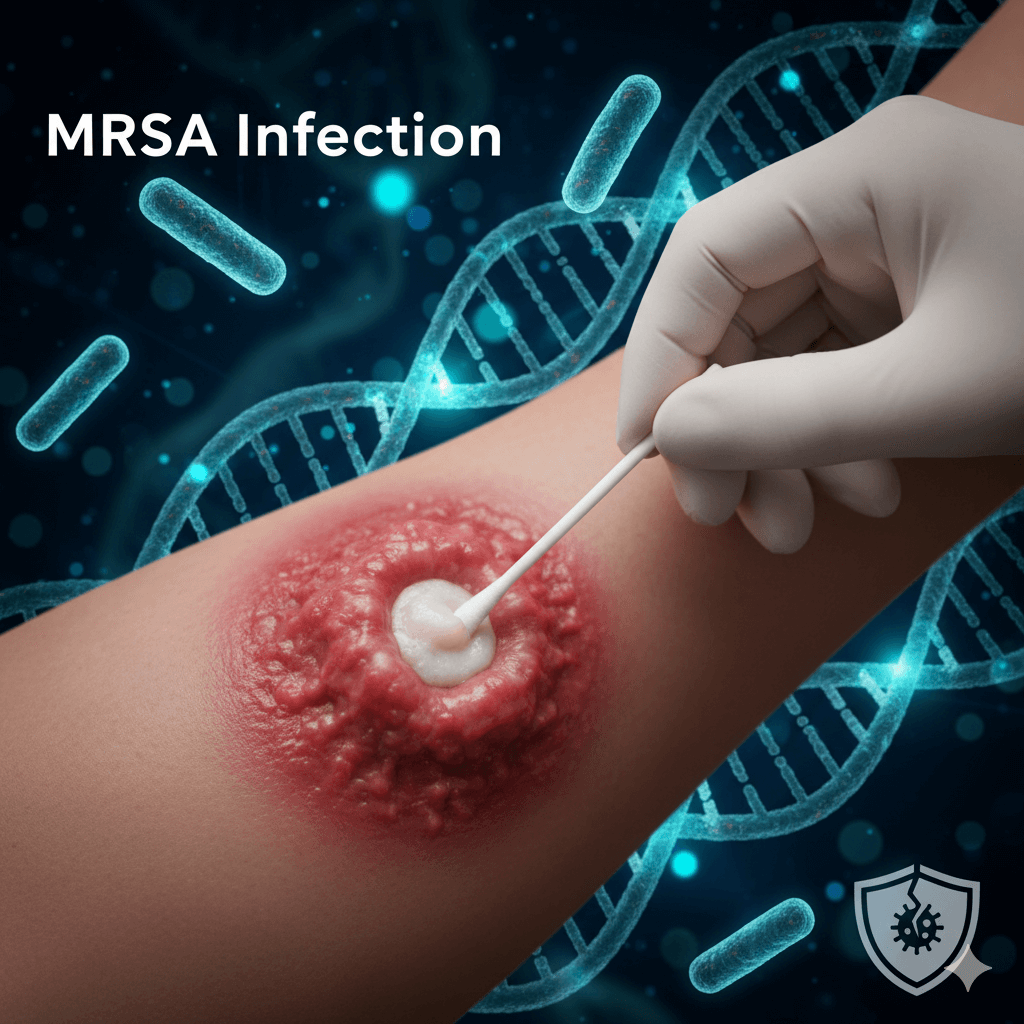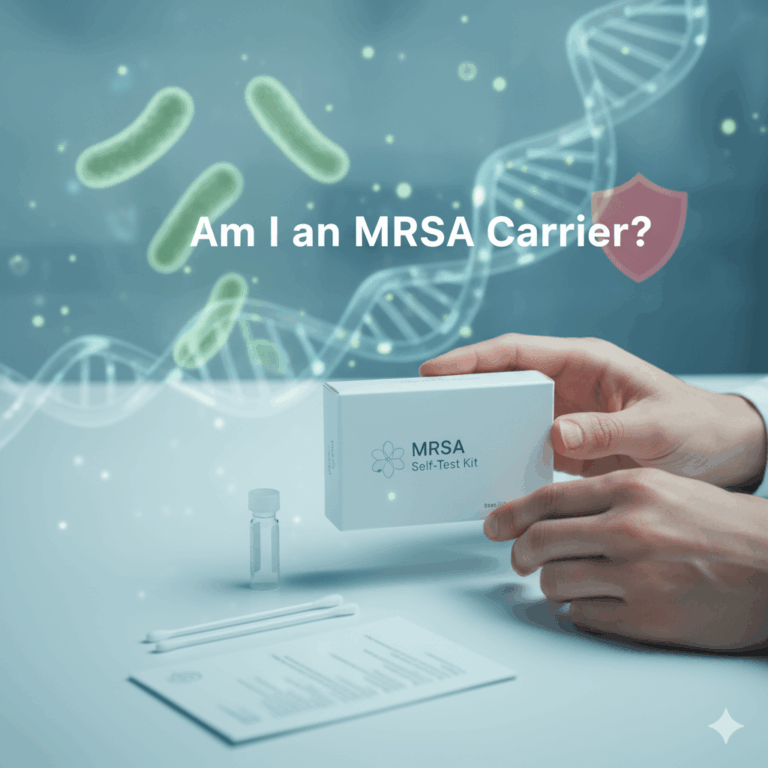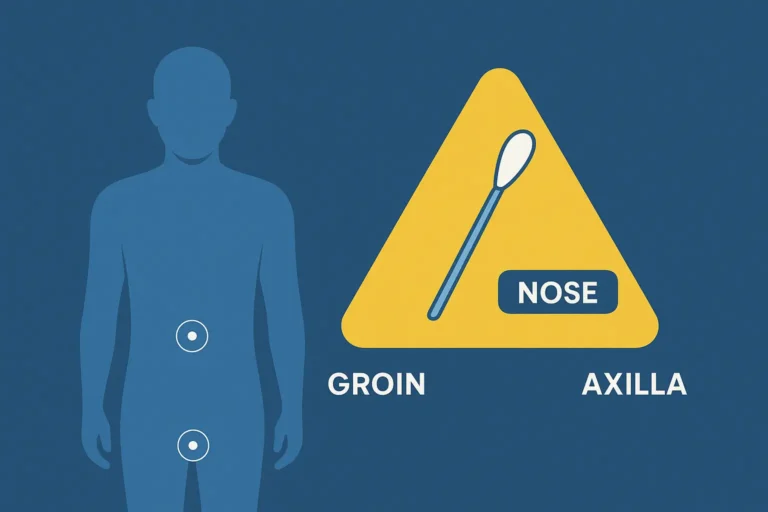Active MRSA Infection: When the Battle Begins – Recognize the Symptoms and Act Fast
In our previous blog post, we discussed the difference between being colonized with MRSA (an asymptomatic carrier) and having an active MRSA infection. While colonization is silent and requires MRSA screening for detection, an active MRSA infection is a serious medical condition that demands immediate attention.
When the bacterium Methicillin-resistant Staphylococcus aureus (MRSA) breaches the body’s natural barriers and starts multiplying, “the battle begins.” Recognizing MRSA infection symptoms early is crucial for effective treatment and preventing severe complications.
1. How Does an Active MRSA Infection Develop?
An active MRSA infection doesn’t appear out of nowhere. Generally, it occurs in the following scenarios:
- Breach in the Skin: MRSA takes advantage of cuts, scrapes, burns, ulcers, or surgical wounds to enter the body.
- Compromised Immune Systems: Individuals with weakened immune systems are more susceptible.
- Medical Devices: Catheters, tubes, or prosthetic devices can serve as a doorway for the bacteria.
- Contact with a Carrier: Although a carrier has no symptoms, they can transmit the bacteria, which can then cause an infection in a vulnerable person.
Once inside, the bacteria multiplies, triggering an inflammatory response from the body that manifests as an infection.
2. Common MRSA Infection Symptoms: What Should You Look For?
MRSA infections can appear in several ways, but the most common affect the skin.
a) MRSA Skin Infections
These are the most frequent forms of MRSA infection. They are often mistaken for spider bites, large pimples, or boils.
- Redness: The skin around the affected area becomes red and often spreads.
- Swelling: The area becomes inflamed and may feel hard.
- Pain: Tenderness and pain to the touch, which can be intense.
- Warmth: The skin feels hot in the infected area.
- Pus or Fluid: There may be a white or yellow center that oozes pus, or the wound may drain cloudy fluid.
- Fever (sometimes): Especially if the infection is spreading.
Common Locations: These lesions often appear in hairy areas like the armpits, groin, buttocks, or beard, as well as in areas of friction or where the skin is damaged.
b) Severe or Systemic MRSA Infections
If the MRSA is untreated, or if the immune system is significantly compromised, the infection can spread to other parts of the body, leading to much more dangerous conditions:
- Bloodstream Infection (Bacteremia/Sepsis):
- High fever, chills, and shaking.
- Extreme fatigue or confusion.
- Rapid heart rate.
- This is a medical emergency that can lead to septic shock and multi-organ failure.
- MRSA Pneumonia:
- Persistent cough with phlegm.
- Shortness of breath, chest pain.
- Fever and chills.
- Bone (Osteomyelitis) or Joint (Septic Arthritis) Infections:
- Severe pain in the bone or joint.
- Swelling and redness over the affected area.
- Fever.
- Urinary Tract Infections (UTI):
- Frequent need to urinate, burning sensation during urination.
- Pelvic pain.
- Cloudy or bloody urine.
3. When to Seek Urgent Medical Help?
Do not attempt to self-diagnose or self-treat a potential MRSA infection. If you experience any of the MRSA symptoms mentioned, especially those of a severe infection, seek medical attention immediately.
Warning signs that require urgent care:
- A skin lesion that worsens rapidly, becomes very painful, is large, or is accompanied by a fever.
- Any signs of infection after surgery or hospital stay.
- Symptoms of severe infection: high fever, difficulty breathing, confusion, dizziness, or severe pain with no apparent cause.
4. Treating an Active MRSA Infection
MRSA treatment varies based on the severity and location of the infection. Doctors may:
- Drain Abscesses: For skin infections, draining the pus is often necessary.
- Prescribe Antibiotics: Although MRSA is resistant to many common antibiotics, there are specific ones that are effective. It is vital to complete the entire prescribed course of antibiotics.
- Hospitalization: For severe or systemic infections, hospitalization and intravenous antibiotics may be required.
Prevention: The Best Defense
The best strategy is to prevent infection in the first place. Maintaining good hygiene, cleaning and covering wounds, and performing an MRSA screening if you are at risk (such as before surgery) are fundamental steps.
While our MRSA home test kit is for detecting colonization, it is your first step to taking control and, if positive, discussing decolonization strategies with your doctor before colonization turns into a severe MRSA infection.
Worried About MRSA? Know Your Status and Protect Your Health.
Early detection of colonization is key to preventing infection. If you are at risk, our MRSA test kit offers you a discreet and accurate way to get answers.



